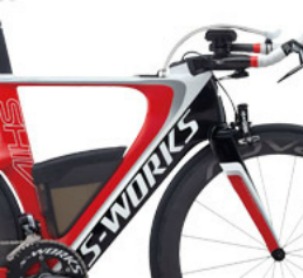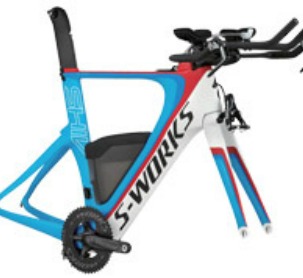
SHIV
TRIATHLON The dedication is intense. After months of training—brick-after-brick, endless transition drills, and getting that race nutrition dialed—one thing is clear. It doesn’t matter if you’re a World Champ like Crowie or first time triathlete, the quest for the perfect race formula is never-ending. Course-crushing tri-bikes like the Shiv and Transition are a key part of this formula, helping you transition to the run with energy left in the tank.

COMPREHENSIVE NUTRITION/HYDRATION SYSTEM
WHAT Fuelselage, is a fully integrated, aerodynamic fuel station, while the frame-mounted Fuelcell is for nutrition and flat storage. The Tri-pod is for additional hydration.
WHY Traditional tube-mounted water bottle setups and storage concepts cause major airflow disturbance. The Fuelselage has no effect on the frame’s aerodynamics, and offers safe, easy, on-the-fly hydration, while the Fuelcell stores gels and bars in the soft upper and flat storage in the lower. Tri-pod on Sitero provides additional water bottle storage behind the rider.
HOW FUELSELAGE: A removable hydration reservoir (approximate capacity of one water bottle) easily fits through a port on the toptube, and fits neatly inside the downtube. The reservoir can be refilled directly through the port without need for removal, even on the fly. FUELCELL: Mounts in the frame “V” for aero qualities and holds 8 gels or two bars and 4 gels in top, basic tools in bottom section. TRI-POD: Integrated Tri-pod (Sitero mounted) can carry additional water bottle behind you.

FACT CARBON AERO FRAME
WHAT Incredibly aerodynamic, crosswind-optimized, non UCI-legal FACT carbon frame with internal cable routing, OSBB, and Fuelselage integrated hydration system; available in five sizes.
WHY To give triathletes a purpose-built, tri-specific, highly aero bike (especially in crosswinds) that is uber-fast but also offers optimized fit for a wide spectrum of riders. Plus with fully-housed, internal cable routing, rebuild after travel and normal maintenance is considerably quicker and less complicated.
HOW By ignoring UCI rules that don’t pertain to tri anyway, we were able to design extra-deep airfoil tubing and fork (up to 6:1 ratios), and a massive headtube. These tubes dramatically improve airflow over the standard 3:1 ratio tubing, and designing each area of tubing separately allowed us to optimize them for the specific airflow. Finally all areas are optimized for crosswinds, more typical than straight-on headwinds, especially in tri.
